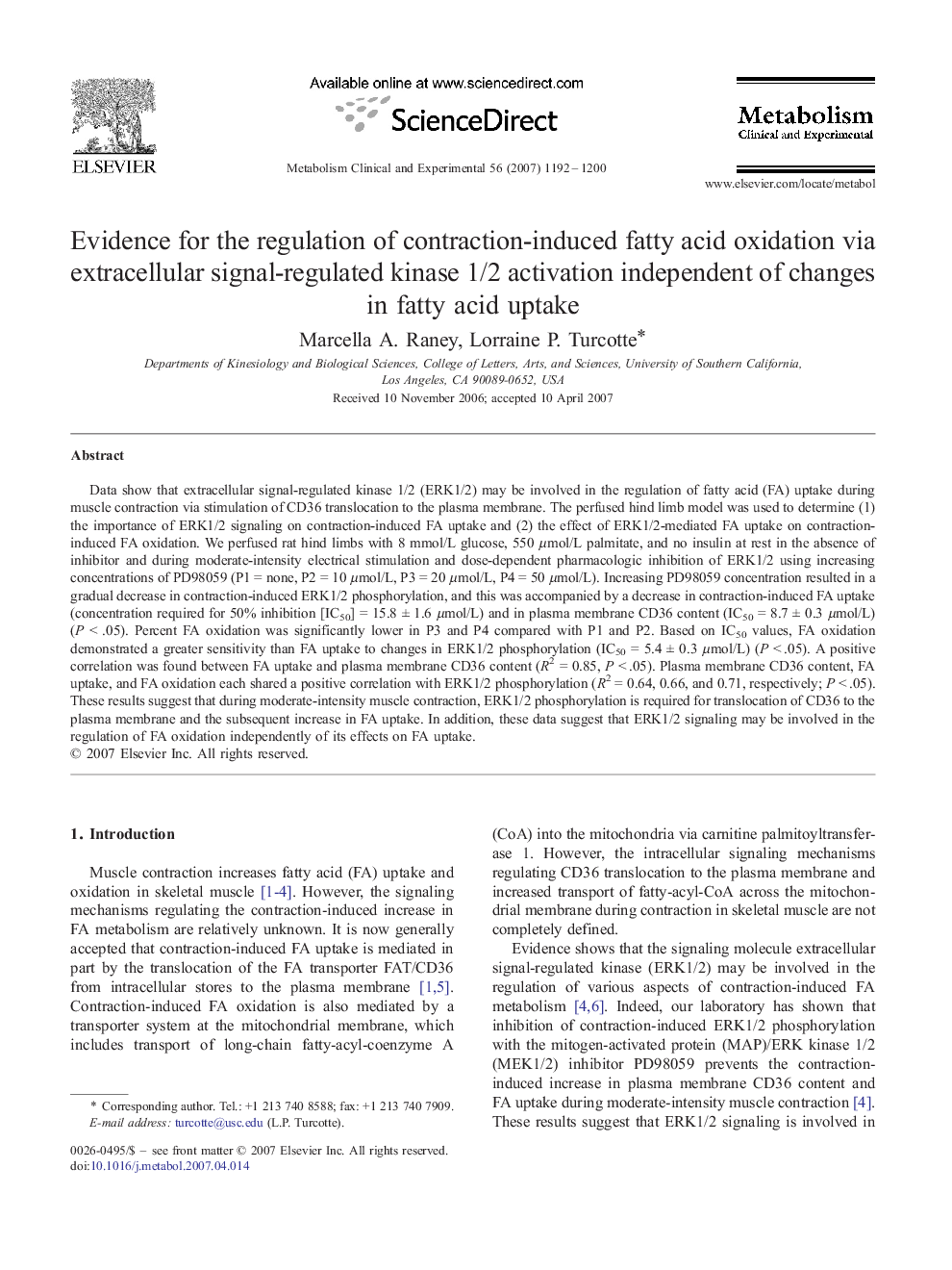| Article ID | Journal | Published Year | Pages | File Type |
|---|---|---|---|---|
| 2807702 | Metabolism | 2007 | 9 Pages |
Data show that extracellular signal-regulated kinase 1/2 (ERK1/2) may be involved in the regulation of fatty acid (FA) uptake during muscle contraction via stimulation of CD36 translocation to the plasma membrane. The perfused hind limb model was used to determine (1) the importance of ERK1/2 signaling on contraction-induced FA uptake and (2) the effect of ERK1/2-mediated FA uptake on contraction-induced FA oxidation. We perfused rat hind limbs with 8 mmol/L glucose, 550 μmol/L palmitate, and no insulin at rest in the absence of inhibitor and during moderate-intensity electrical stimulation and dose-dependent pharmacologic inhibition of ERK1/2 using increasing concentrations of PD98059 (P1 = none, P2 = 10 μmol/L, P3 = 20 μmol/L, P4 = 50 μmol/L). Increasing PD98059 concentration resulted in a gradual decrease in contraction-induced ERK1/2 phosphorylation, and this was accompanied by a decrease in contraction-induced FA uptake (concentration required for 50% inhibition [IC50] = 15.8 ± 1.6 μmol/L) and in plasma membrane CD36 content (IC50 = 8.7 ± 0.3 μmol/L) (P < .05). Percent FA oxidation was significantly lower in P3 and P4 compared with P1 and P2. Based on IC50 values, FA oxidation demonstrated a greater sensitivity than FA uptake to changes in ERK1/2 phosphorylation (IC50 = 5.4 ± 0.3 μmol/L) (P < .05). A positive correlation was found between FA uptake and plasma membrane CD36 content (R2 = 0.85, P < .05). Plasma membrane CD36 content, FA uptake, and FA oxidation each shared a positive correlation with ERK1/2 phosphorylation (R2 = 0.64, 0.66, and 0.71, respectively; P < .05). These results suggest that during moderate-intensity muscle contraction, ERK1/2 phosphorylation is required for translocation of CD36 to the plasma membrane and the subsequent increase in FA uptake. In addition, these data suggest that ERK1/2 signaling may be involved in the regulation of FA oxidation independently of its effects on FA uptake.
